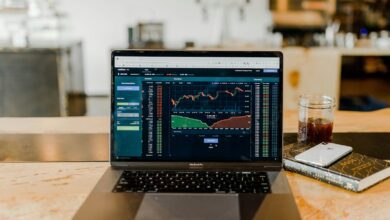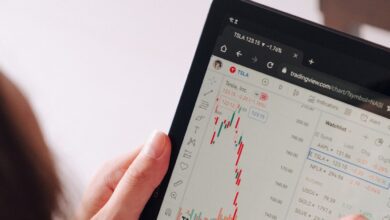Futures trading – derivative investment approaches

Utilize leverage cautiously to maximize exposure to commodities without committing full capital upfront. This strategy enhances portfolio diversification and can amplify returns, but requires rigorous risk controls due to amplified volatility. Market participants often deploy contracts as tools for hedging price fluctuations in raw materials like oil, gold, and agricultural products, effectively managing downside risks linked to physical holdings.
Speculators capitalize on short-term price movements by taking positions based on directional bets, liquidity trends, and seasonal demand shifts. Successful speculation demands in-depth analysis of supply chain disruptions, geopolitical tensions, and macroeconomic indicators that influence commodity valuations. Employing margin efficiently while monitoring margin calls is critical to sustain positions amid sudden market swings.
Risk mitigation through strategic use of forward agreements enables producers and consumers to lock in prices ahead of delivery dates, stabilizing cash flows against adverse market changes. Incorporating these instruments into asset allocation frameworks supports balancing growth objectives with capital preservation mandates. Regulatory updates affecting contract specifications and clearinghouse requirements also shape execution tactics and compliance strategies.
Futures trading: derivative investment approaches [Investment Insights investment-insights]
Utilizing hedging mechanisms through futures contracts offers a strategic method to mitigate price volatility risks inherent in commodities and financial assets. Market participants employ these agreements to lock in prices, thereby safeguarding portfolios against adverse movements while retaining the ability to capitalize on favorable trends. The precise calibration of hedge ratios is critical, as it directly influences the effectiveness of risk reduction without overly constraining potential gains.
Leverage embedded within these instruments enables amplified exposure relative to capital outlay, facilitating enhanced profit potential alongside elevated risk profiles. Prudent management of margin requirements and position sizing remains paramount to avoid liquidation scenarios during periods of heightened market turbulence. Institutional entities often deploy algorithmic models to adjust leverage dynamically, balancing opportunity with capital preservation objectives.
Derivative-based strategies and commodity applications
Adopting systematic methodologies such as calendar spreads or basis trading allows investors to exploit temporal price differentials across contract maturities or between spot and forward prices. In commodities markets–ranging from energy products like crude oil to agricultural staples such as wheat–these tactics enable arbitrage opportunities and inventory cost optimization. For example, refiners may utilize crack spreads to hedge processing margins by simultaneously managing long crude oil positions and short refined product exposures.
The integration of quantitative analytics enhances decision-making processes by identifying statistical anomalies and momentum patterns within futures pricing data. Backtesting historical datasets supports validation of hypothesis-driven trading frameworks, promoting disciplined execution aligned with defined risk-return parameters. This analytical rigor helps distinguish transient market noise from sustainable directional signals.
Regulatory developments increasingly influence operational considerations, especially concerning leverage limits and reporting requirements imposed by exchanges and supervisory authorities. Compliance adherence ensures access continuity while mitigating systemic risk contributions attributed to excessive speculative activity. Market transparency improvements, via centralized clearinghouses, further enhance counterparty credit assurances essential for maintaining orderly functioning under stress conditions.
Forecasting future price trajectories benefits from incorporating macroeconomic indicators alongside technical analysis tools tailored for time-sensitive derivatives markets. Variables including interest rate shifts, geopolitical tensions affecting supply chains, and demand fluctuations provide contextual insight supporting scenario planning. Dynamic portfolio adjustments leveraging these projections facilitate adaptive positioning that aligns with evolving economic cycles without succumbing to behavioral biases prevalent among less experienced traders.
Risk management with futures
To mitigate exposure to price fluctuations, market participants frequently utilize contracts that obligate buying or selling assets at predetermined prices and dates. This strategy primarily serves as a hedge against adverse movements in underlying commodities or financial instruments, effectively locking in costs or revenues. For instance, agricultural producers often secure their output’s value by entering into these contracts well before harvest, thereby insulating themselves from market volatility.
Conversely, speculators engage in such agreements aiming to profit from anticipated price changes without holding the actual asset. While this enhances liquidity and price discovery within markets, it also introduces significant risk if predictions prove inaccurate. Thus, managing positions through disciplined monitoring and predefined exit strategies becomes indispensable for those employing this method for profit generation.
Strategic applications of hedging mechanisms
The primary mechanism for reducing risk involves offsetting potential losses in physical holdings by assuming opposite positions in futures contracts linked to the same or correlated assets. This approach is particularly prevalent among entities dealing with volatile raw materials such as oil, metals, and agricultural products. By doing so, they can stabilize cash flows and budget forecasts despite unpredictable spot market conditions.
A practical example includes an airline company purchasing contracts to secure fuel costs ahead of time, thus shielding operational expenses from sharp price increases. Similarly, mining firms might sell agreements referencing metal prices to protect revenue streams during downturns. Both scenarios illustrate how preemptive commitment using standardized agreements can enhance financial planning accuracy.
- Cross-hedging: Utilizing related but not identical contracts when exact matches are unavailable.
- Basis risk management: Monitoring the difference between spot prices and contract prices to optimize hedge effectiveness.
- Dynamic adjustment: Regularly recalibrating positions as market conditions evolve.
Effective use of these techniques demands rigorous analytical frameworks incorporating historical price correlations and volatility assessments, alongside real-time monitoring platforms capable of triggering timely interventions.
The speculative dimension requires heightened vigilance due to leverage inherent in contract size relative to margin requirements. Traders must employ stop-loss orders and position limits aligned with risk tolerance levels while maintaining discipline amid rapid market shifts. Additionally, understanding regulatory frameworks governing margin calls and settlement procedures ensures preparedness against forced liquidations.
An illustrative case occurred during periods of extreme market stress when leveraged participants suffered substantial losses following unexpected geopolitical events affecting commodity supply chains. These instances underscore the necessity for robust risk controls integrating scenario analyses and contingency planning within portfolio management systems.
Hedging strategies for investors
To mitigate risks associated with price volatility in markets such as commodities and cryptocurrencies, market participants often utilize contracts that allow locking in future prices. These instruments provide a systematic way to shield portfolios from adverse movements by taking offsetting positions. For example, producers of physical goods may sell contracts equivalent to their output volume, thus securing revenue streams against unfavorable price fluctuations. Employing leverage within these contracts can amplify hedging efficiency but requires precise risk management due to increased exposure.
Market actors seeking protection frequently adopt positions opposite to their underlying asset holdings, thereby neutralizing potential losses. This method is especially prevalent in sectors where spot price uncertainty is high and liquidity constraints exist. Utilizing standardized agreements facilitates transparent valuation and enables adjustment of hedge ratios dynamically based on evolving market signals. Moreover, the flexibility of these financial tools allows integration with broader portfolio management techniques aimed at optimizing risk-return profiles.
Technical insights into protective positioning
A common protective mechanism involves short positions in contract-based agreements to offset long exposure in the asset itself. This approach effectively caps downside risk while maintaining upside participation through underlying holdings or alternate instruments. For instance, an agricultural firm anticipating harvest sales might enter into such arrangements to stabilize income despite unpredictable weather conditions impacting commodity prices. Quantitative models often guide the determination of optimal position sizes by analyzing historical volatility and correlation metrics between spot and contract prices.
Speculative activity within these markets influences pricing dynamics and liquidity depth, affecting hedge effectiveness. Traders leveraging margin amplify market sensitivity to macroeconomic data releases and regulatory announcements, which may induce sudden shifts in implied valuations. Consequently, continuous monitoring of open interest levels and basis spreads becomes critical for adjusting coverage tactics appropriately. Integrating algorithmic signal processing helps identify entry points for initiating or unwinding protective stances aligned with strategic objectives.
Speculative Techniques in Futures
Utilizing leverage remains a primary strategy for market participants seeking amplified exposure without substantial capital outlay. By borrowing funds or using margin accounts, speculators can magnify potential returns; however, this also increases risk exponentially. For example, a 10x leverage on a commodity contract can translate a 1% price movement into a 10% gain or loss, demanding rigorous risk management protocols to avoid liquidation events.
Another advanced tactic involves directional bets based on anticipated price movements of underlying assets such as oil, gold, or agricultural commodities. Traders may adopt long positions expecting appreciation or short positions to capitalize on depreciation. These speculative stances require thorough technical analysis and sentiment evaluation to time entries and exits accurately under volatile conditions.
Hedging techniques are frequently repurposed by speculators aiming to offset directional risk while maintaining upside potential. Strategies like spread trading–simultaneously taking opposite positions in related contracts–allow the capture of relative value discrepancies between maturities or correlated assets. For instance, calendar spreads in crude oil futures exploit contango and backwardation cycles to generate profits independent of outright price direction.
Leveraged synthetic structures crafted through options embedded within futures contracts offer another layer of complexity. Utilizing calls and puts alongside base contracts permits the construction of asymmetric payoff profiles. Case studies from energy markets demonstrate how such combinations can protect against downside scenarios while retaining participation in favorable trends, optimizing the risk-reward balance for speculative portfolios.
Algorithmic methodologies increasingly dominate speculative activity by automating entry criteria based on quantitative signals like volatility spikes, volume surges, and order flow imbalances. High-frequency models executing numerous micro-trades capitalize on transient inefficiencies across commodities exchanges globally. Real-time data integration with machine learning facilitates adaptive strategies that adjust leverage ratios dynamically depending on prevailing market regimes.
The regulatory environment impacts speculative frameworks significantly through margin requirements and position limits imposed by oversight bodies such as the CFTC or ESMA. Recent reforms aiming at curbing excessive speculation have driven shifts toward more diversified hedging instruments and reduced reliance on naked exposures. Analysts forecast that innovations in blockchain-enabled clearinghouses could enhance transparency and settlement efficiency, fostering safer participation in futures markets worldwide.
Leverage and Margin Usage: Strategic Implications and Future Trajectories
Maximizing capital efficiency through leverage demands rigorous risk assessment and precise margin management, especially when engaging with instruments tied to commodities or financial indices. Employing amplified exposure facilitates sophisticated speculation and hedging strategies but simultaneously elevates vulnerability to market volatility, necessitating robust risk controls aligned with quantitative models.
Empirical data from recent commodity cycles indicate that leveraging beyond 10x margin ratios significantly increases drawdown potential, underscoring the necessity for adaptive position sizing frameworks. Market participants must integrate dynamic margin requirements reflective of liquidity conditions and asset-specific volatility metrics to mitigate systemic risks inherent in leveraged engagements.
Technical Insights and Forward-Looking Perspectives
- Risk Calibration: Leveraged positions should be continuously stress-tested against multi-factor scenarios, incorporating interest rate shifts, geopolitical events, and regulatory changes impacting asset correlations.
- Strategic Hedging: Entities utilizing leverage for portfolio protection can optimize outcomes by combining cross-asset derivatives, balancing short-term speculative trades with longer-term protective stances.
- Regulatory Evolution: Anticipate tighter oversight on margin thresholds as global authorities respond to increased systemic interconnectedness driven by derivative exposures across traditional and digital asset markets.
- Technological Integration: Advanced algorithmic solutions leveraging machine learning will increasingly guide real-time margin adjustments and leverage optimization, enhancing decision-making precision.
The evolution of leveraged frameworks will increasingly intersect with decentralized finance protocols, offering programmable margin functionalities that adapt instantaneously to market dynamics. This convergence heralds a new phase where capital deployment strategies blend traditional commodities expertise with blockchain-enabled transparency and automation. Market actors should therefore cultivate hybrid skill sets encompassing both classical financial theory and emerging technological paradigms.
The trajectory of leveraged exposure is set towards more granular customization of collateral requirements and real-time risk analytics. Stakeholders capable of harnessing these innovations will gain decisive advantages in managing exposure across diverse asset classes while maintaining resilience amid heightened economic fluctuations.






